
Age is no barrier. It’s a limitation you put on your mind.
Jackie Joyner-Kersee

Age is no barrier. It’s a limitation you put on your mind.
Jackie Joyner-Kersee
When you are a runner, a mention of ‘Achilles’ heel’ doesn’t make you think of Greek mythology (but feel free to read up on that here). Instead, it’s that tendon in the back of your leg that occasionally acts up. My Achilles’ tendon has never been my Achilles’ heel (pun intended 😜), but I know it’s an issue for many. I am not selfish, I do research on behalf of my friends, too 😉.
Let’s start with what is Achilles tendon: it attaches your heel bone to your calf muscles. I don’t know how about you, but I think that location is just begging for problems. I regularly put my foot down wrong and tweak my ankles. You can pretend you don’t, but I know it happens to you, too! So how can something attached right there be safe from getting hurt?
Achilles’ heel, also known (more scientifically) as Achilles’ tendinitis, is an inflammation to that tendon. It’s a type of injury you totally give to yourself per your own request: it’s caused by repetitive movement, such as walking, running, jumping or pushing up on your toes. Oh, and let’s not forget one of my favorites: stair climbing.
Fortunately, you don’t automatically give yourself the Achilles’ heel just by doing the above exercises. A recurring theme here is having a tight calf muscle pulling on your tendon. This tends to happen when you start a new sport, increase amount or intensity too fast or run on an uneven surface (this is how I usually cause calf tightness – hence I’m not big on trail running). Your body can be also working against you here through bone spurs, some medical conditions, flat arches in your feet (I should get tendonitis daily if that’s a major factor!) and age (you can only go in one direction on this one…).
Well, besides the awful pain in your leg? You know – the one you feel exactly where the tendon is? And yes, it gets worse as you exercise. Your tendon can also thicken or you can experience swelling in the area. My symptoms are usually tightness in that area, especially before I start moving. I tend to loosen it up after I move around. But anything that makes it hard to walk ‘like a normal person’ is a sign. And a bad one at that.
Oh, and let’s get this clear: if you hear a ‘pop’ followed by sharp pain, you probably ruptured the tendon. To be fair: any time you hear an unexpected pop in your body, it’s most likely bad news and you should go see a doctor.
First thing first: make sure you have the right shoes! I know I refer to this article a lot, but what can I say: when you’re a runner, no piece of equipment is more important than your shoes.
Next thing: if you are starting to experience pain or serious discomfort, stop! Maybe a little bit of stretching or a warm up could help? Especially before you get going. If you are prone to Achilles’ tendon injuries, you know it. It’s either because your body is that way or because you train in a particular manner. Either way, you got a warning – now make sure you’re ready for your next run/ hike/ climb.
Last, but not least, pay attention to your workout plans. If you notice that running along your favorite trail always causes tightness in your calf and occasional pain in the tendon, look for alternatives. Maybe something less filled with holes and rocks? Make sure to plan your training schedule appropriately, too. Idea of getting yourself in marathon-form from not doing more than 10k at a time in a month may not be your best… Focus on building your fitness gradually.
As always, if you get advice of a medical professional, do as they say. It takes precedence over ‘this lady on the internet said (…)’. I do my research and do my best to provide good, helpful advice. But I’m not a doctor.
Having said that, here are some home remedies:
Here are some a little less on-the-go solutions:

Do you remember how last week I mentioned bending in the foot? Yeah, that’s how you stretch out the Achilles tendon. Time saver!
Here is a video of another good exercise:
In case you’re having issues with video, here are images of the beginning and end positions of the exercise:
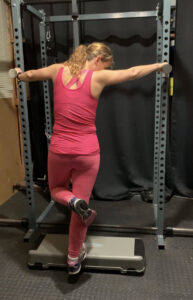
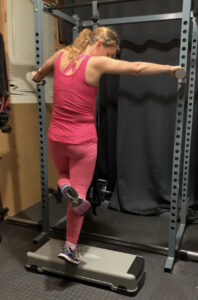
This exercise is actually awesome, as it shows you all the movements that will help you strengthen your Achilles tendon. Also: stretches in these directions help.
Keep stretching and I will see you out there!

You have to figure out ways to get through those ‘oh, no, I can’t do this’ moments.
Found on Iron Women Podcast
Have you developed IT band problems yet? If you are a runner, chances are that you have either already experienced them or they are in your near future. I already gave a high-level overview of these issues in my article about knee pain.
Full name for the IT band is iliotibial band. It’s a nightmare to spell out every time (and apparently I consistently misspelled it in my knee pain article, for which I profusely apologize), so let’s stick to IT band.
(insert pic of my leg with drawing)
So the IT band are the fibers that go on the outside of your leg from your hip to your shin bone just below your knee.
Like any other body part made of fibers, it can get too tight. Repetitive bending and straightening of your knee will cause the IT band to rub against bursa (sack of fluid in your knee) and, eventually, an inflamation.
There are certain physical traits that may increase your likelihood of developing the IT band syndrome:
And sometimes you may be doing it to yourself (I sure hope not on purpose):
If you’d like to read some scientific sources on the issue, Cedars-Sinai has a good article.
Let’s start with the obvious solutions, like make sure you have the right shoes. This means both the correct type and that they are not all worn out. Once you sort out your footwear, take a look at where you train. Maybe you need to find a flatter road? Or something easier on the joints?
If you now know that you have addressed the external issues, take a good look at your workouts. Have you been repeating these hills too often? Maybe it’s time for a rest day?
So it happened: you have the IT band syndrome (or at least as far as you can tell) and you need to do something about that horrible pain. Step one: get some rest and don’t make it any worse. Step two: the ‘usual suspects’ of dealing with injuries – ice down what hurts, put your leg up (like above your heart level up) and stabilize through compression. If it’s really bad, some anti-inflammatory meds may be in order, but you may want to talk to a medical professional before going that way.
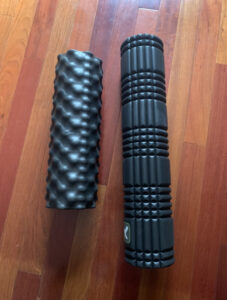
Have you met this evil object yet? Personally, I think it hurts like hell. Probably a good indicator that I really need to use it… I strongly recommend you use it daily if you are prone to having IT band issues.
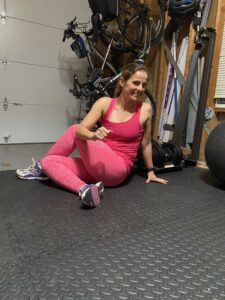
Sitting on the ground, put one leg over the other and twist. Push your elbow against your knee. I used to keep my other leg straight, since I thought it was just a back stretch. That is until Diana told me to bend it in. This made me feel stretch in the IT band. Yay!
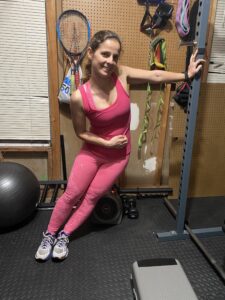
This one seems self-explanatory: lean your hips in, while using an arm to hold your upper body up. Easy to do, as long as you remember not to stick your butt out.

So this one is harder. You have probably seen this stretch done without any support. I don’t know about you, but I don’t have enough balance to do it without assistance. Diana suggested putting my hands against the wall. It helped. A lot. You can probably see that my right foot is bent in, which is an uncommon variation. I will address this next week 😉.
Keep up the good work and remember to stretch!

One cannot improve as an endurance athlete except by changing one’s relationship with perception of effort.
Matt Fitzgerald

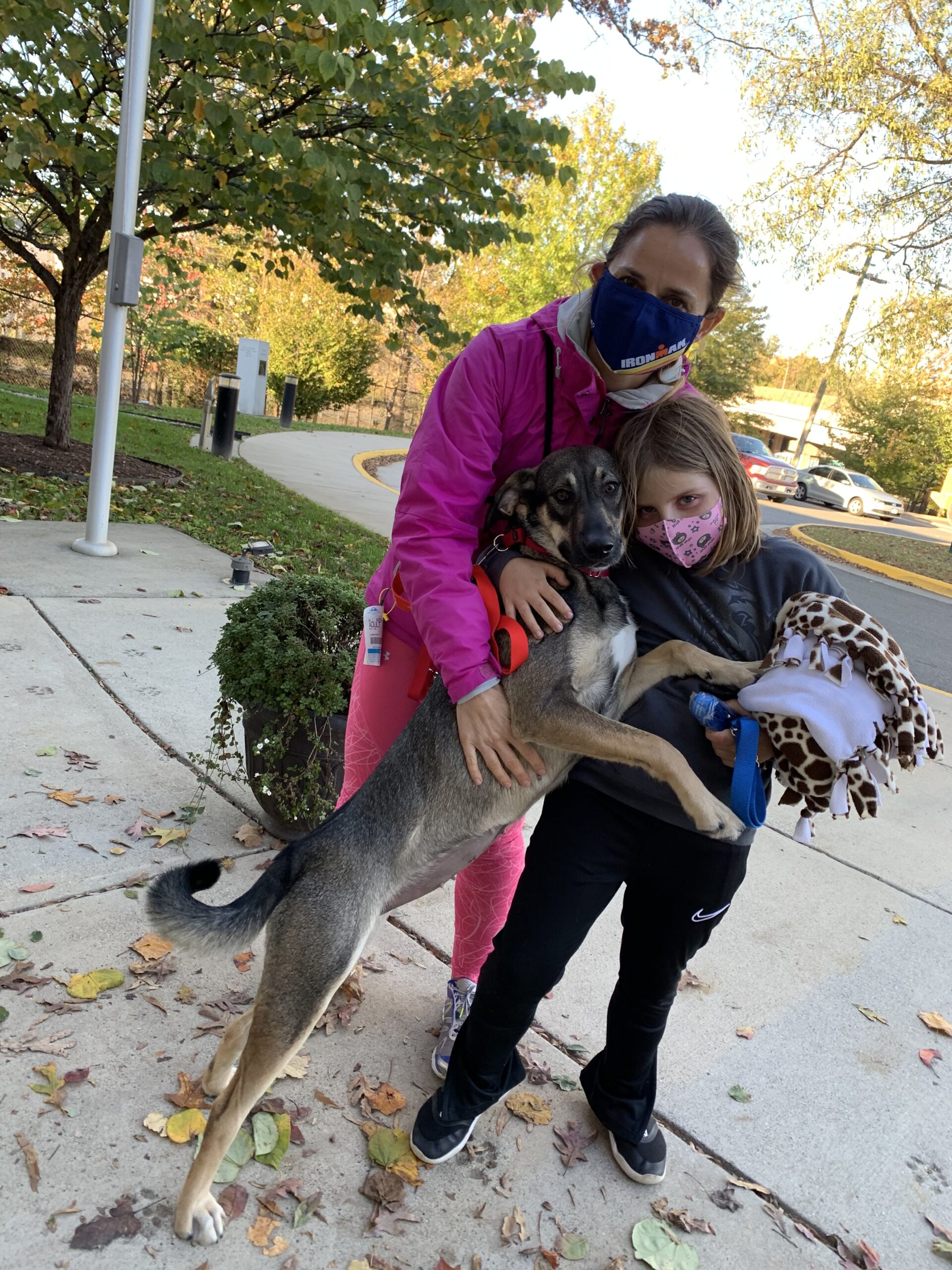
I have adopted a lovely rescue pup named Maleficent and now I am faced with a new challenge: running with a dog. She is a mutt (or ‘poster child for diversity’ as I occasionally put it), but there is one thing that you can notice immediately: she is part husky. Just look at that tail! I immediately tested her road-worthiness and it sure was interesting. On one of the first days, she got me 8:31 minute/mile intervals. So, obviously, I immediately started to research online how to go about it.
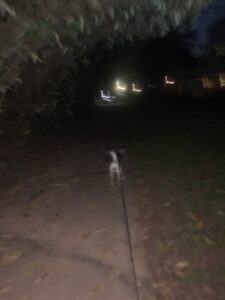
Well, that depends on your dog’s breed. Google told me that dogs need about an hour of exercise per day. I have no idea what dogs they are referring to, but it’s not Mal or her best friend Jeter. They are more of a 3 hour per day types!
So can my dog run with me? Well if it’s a husky or Alaskan malamute, then not only can it, it should! They probably have one of Mal’s traits in spades: unless they get enough exercise, they go nuts! Or, as my daughter calls it ‘cray-cray in the hey-hey’. Her German shepherd side of the family isn’t helping either…
While doing research for this article, I learned that there are races when dogs are welcome and Runner’s World (yes, I read them a lot) had a nice list of great ones. You’re welcome 😉.
However, that’s not the case for all breeds. Just think of bulldogs or pugs. They are called brachycephalic breeds and those won’t be your best running companions. Not only do they have short legs, but their short snouts also makes breathing difficult for them. If you’d like to learn more about breeds that are well suited for running, I’d like to refer you to this article by Runner’s World.
Once you found the right breed for running, you have to figure out if they are ready for your running plans. Like humans, dogs have to develop their bones and joints sufficiently in order to participate in regular exercise. One of the more frequently mentioned issues is their breastplate needs to be fused. Depending on the breed and size, this will happen between 8 and 18 months. And yes, I asked Mal’s vet during our first visit for a blessing to run with my pupperina.
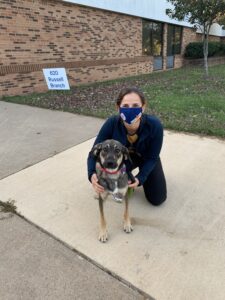
So this is where I went a bit wrong… As they say, learn to walk before you run. I didn’t listen… Mal was hyper since the get-go, so I took her running with me and it was ‘not ideal’. Let’s break down what you need to figure out first.
Step 1: get your dog used to staying by your side. One side. Always the same one. Sounds simple, doesn’t it? Except it’s something a dog has to learn. Otherwise, they will be a tripping hazard and you two will keep kicking each other and have a generally miserable time. Please don’t try it. I did it and it ‘wasn’t ideal’.
Does your dog chase every squirrel? Go for pets from EVERY human walking by? Or maybe tries to befriend all the dogs? Well, Mal does ALL of these ALL the time. We are now working on it. She is already improving, but until I can keep her going steadily by my side, I think we won’t be doing serious runs.
Teach your dog to understand what you need them to do. We all need to be able to communicate to the dog that they need to slow down (Mal gets a bit excited and will take off full speed every now and then) or speed up. Finding a good pace is always a struggle, even if you’re alone. Dog just adds new dimension to it.
My vet told me Mal has to develop calluses on her paws. But that’s not the only reason why you should ease into running. Like humans, dogs need to build up their stamina and leg muscles. You wouldn’t want your fur-friend to have sore legs, would you? Start with a short distance and watch your dog later and the next day for signs of pain in their legs. Then increase distance gradually. Quick warning from Mal’s vet: keep in mind that the fitter they are, the more exercise they will need on a regular basis. You don’t want to create a monster that has to run for a few hours every day or they destroy your house.
Don’t overfeed your new running partner. Weirdly enough, this sentence applies to both human and furry companions. We all tend to overcompensate in food for calories burned at the gym and on the road. Observe your dog’s weight and appetite before starting to feed them more.
I admit openly: I wasn’t sure where to stick this one… You probably don’t want to have to stop for your dog to relieve themselves mid-run or be forced to run with a bag of poop until you find a trashcan. If you can train your dog to do their business as soon as they leave the house, that would be ideal. Mal somehow picked a patch of grass behind my house as her toilet. It’s next to a poop trashcan, so it’s awesome. I highly recommend it!
Your dog isn’t the only one who needs training. You need to learn to be a good leader on the runs. Observe your pupper. Are they tired? Are they showing signs of dehydration? Understanding their cues will help you make a happier connection and allow you both to enjoy the experience.
I swear there are as many opinions on this issue as there are people running with dogs!
Some people enjoy running with an off-leash dog. Here is a thing though: you have to be in a place where that is an option, both legally and from a purely practical point of view. If you do get out to trails when your pupper can run free, it’s awesome. Make sure though that he/she won’t run off or get themselves in trouble with a snake or other wildlife.
I assume most of us have to keep our dogs on a leash, just like I do. There are many leash options out there and each has its fans. Personally, I recently tried out one that goes around my waist and has bungee leash. It’s awesome! I appreciate having my hands available for anything I need and the bungee allows us some leeway before she pulls on me or the cord gets too loose. However, some prefer firm leashes or something they can hold in their hands. I guess holding the lead allows you to better control the dog in case of trouble. In that case, it may be best with a dog who is just learning how to run with you.

I know, it’s a bad picture. It’s hard to photograph a dog in the dark, when you need to use flash.
Admit it: you knew this was coming. And if you didn’t, you clearly haven’t been paying attention. ‘Invisible’ dogs and people on roads and trails are my pet peeve. So if you’re going out with your pup in questionable lighting, but a light-up collar or a vest on him/her!
Dogs get dehydrated faster than they get tired. This statement was news to me. On the other hand, it’s same for me, so I probably shouldn’t have been all that surprised. If you’re going a bit further or it’s hot, you will need to bring water for your four-legged companion.
Some dogs can drink water out of bottles and water packs. More power to them! Sadly, not all are that well trained or are simply not there yet. What I found invaluable is a collapsible bowl. It’s awesome, as I use it when I want to go for a hike with Mal and I have a feeling it will come in handy when it gets so hot in here that just leaving the house can get you dehydrated.
Poor Mal started licking her paws after a couple of runs. Her vet said nothing is wrong and she just needs to develop calluses. I am sure that a professional who also runs with her pups knows what she’s talking. But the conditions aren’t always ideal and that should be taken into account.
Softer surfaces are better for the paws. Places with a lot of sharp rocks or broken glass are bad. Snow may be ok, but ice and ice balls may hurt. If asphalt is too hot for you to hold the back of your hand to it, then it’s too hot for paws.
What can you do to help? There is such thing as paw balm and it may help. It you want something more sturdy, a pair of booties can be easily bought. One way or another, make sure your dog’s feet are safe!
Congrats on your new running companion! Mal and I look forward to seeing you out there 😊
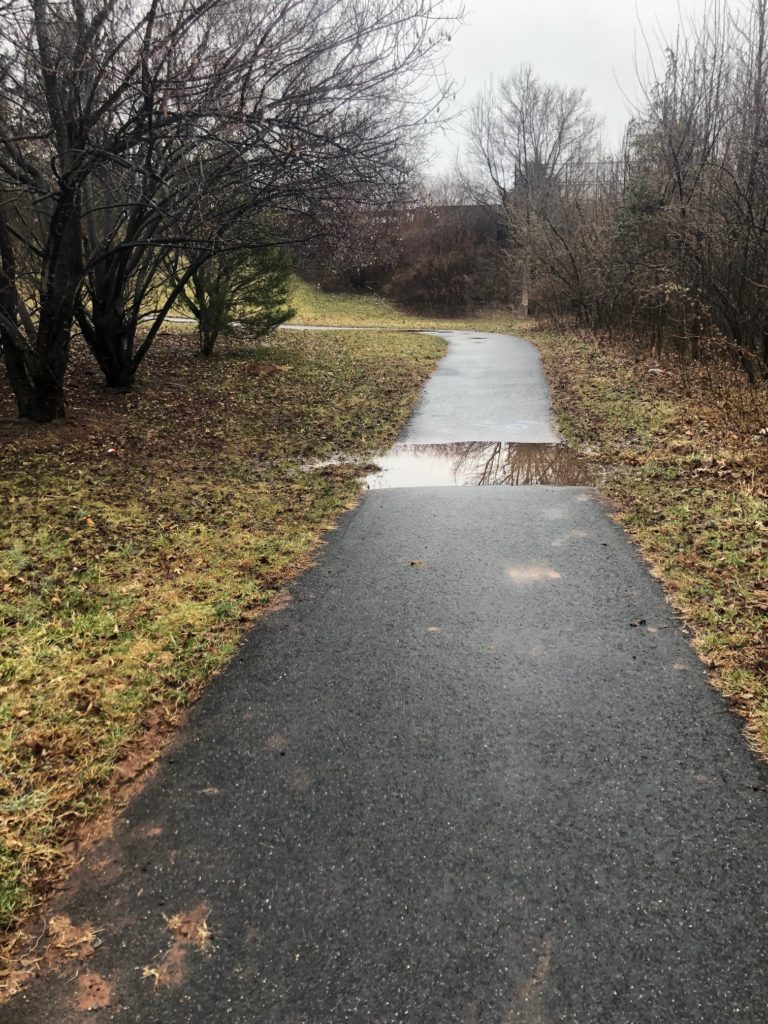
Grit is passion and perseverance for long term goals. Grit is having stamina. Grit is sticking with your future day in, day out – not just for the week, not just for the month, but for years, and working really hard to make that future a reality.
Angela Duckworth
Visit our shop for cool triathlete merchandise!
Subscribe to receive updates and exclusive content!
Have you heard about VO2 Max? I probably saw it here and there, but I never gave it a second thought until I got a new Garmin watch which measures it and displays it.
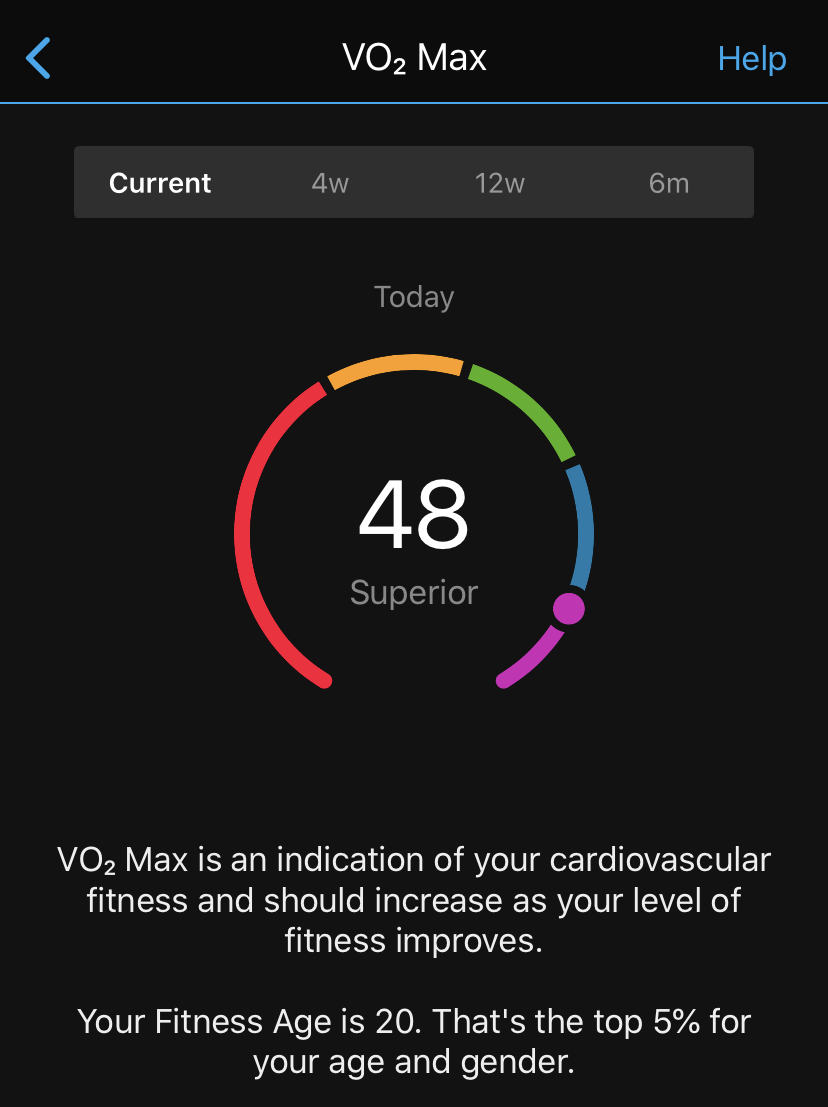
According to Wikipedia, VO2 Max is ‘the maximum rate of oxygen consumption measured during incremental exercise; that is, exercise of increasing intensity’. Basically, it describes what shape your cardiovascular system is in. It’s important for both endurance athletes, telling them how their training is progressing, and ‘normal’ people, for whom there is a relationship between cardiovascular disease and mortality rates from variety of causes increases as this indicator drops. Here are charts of ranges:
Women:

Men:

The name VO2 Max comes for Volume of O2 (oxygen) Maximum. It doesn’t really roll off the tongue, does it… It’s usually measured as liters of oxygen per minute or milliliters of oxygen per kilogram of body mass. Something to note: this indicator is not directly correlated with body mass or species of animal.
Well, most people do it through their smart watches, such as my Garmin. It’s an estimate based on your pace and heart rate while you’re running. It’s not highly precise, but it will help you see where you place and you can see progress as you train.
In general, smart watches overestimate your numbers some. Difference is larger if you use a measurement from your wrist, as opposed to a chest strap. But yes, dear reader, there is a way to get a perfectly accurate measurement! How? If you have an access to proper type of a lab (most of us probably don’t), you can get it done. It involves a mask with a sensor, measuring oxygen you breath in, what you breath out and your heart rate. Oh, and let’s not forget about either a bike or a treadmill, where you keep increasing level of difficulty. From what I’ve been told, it’s not really a pleasant experience.
VO2 Max isn’t an equally useful metric to all. These days, science can provide you with dozens of numbers about your training and where are you at at any given moment. If you’re a nerd who enjoys all of this, then you may like knowing what your VO2 Max is. From my perspective, the most appealing aspect of it is knowing if I’m progressing. If you happen to know what’s your speed at VO2 Max, then there may be a more practical application: knowing what your pace should be during intervals training.
If you want it to drop, just spend a couple of weeks on the couch 😉.
Oh, wait, that’s not what you meant, is it? Right, you want to improve it. Commendable, as it is how you improve your fitness. The answer is rather banal: it’s the same as with every other metric you want to improve in endurance training. Main ones are:
I hope this helps! I know I’ve been wondering about VO2 Max and tried to figure out how to incorporate it into my training. Apparently, I have been doing it right: using it to monitor my progress.
Take care and as always, I will see you on the road!